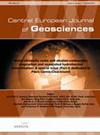Surveillance of Vrancea active seismic region in Romania through time series satellite data
引用次数: 3
Abstract
Cumulative stress energy in active seismic regions caused by tectonic forces creates various earthquake precursors. This energy transformation may result in enhanced transient thermal infrared (TIR) emission, which can be detected through satellites equipped with thermal sensors like MODIS (Terra/Aqua) and AVHRR (NOAA). Satellite time-series data, coupled with ground based observations, where available, can enable scientists to survey pre-earthquake signals in the areas of strong tectonic activity. This paper presents observations made using time series MODIS and NOAA-AVHRR satellite data for derived multi-parameters including land surface temperature (LST), outgoing long-wave radiation (OLR), and mean air temperature (AT) for the moderate, 5.9 magnitude earthquake, which took place on the 27th of October, 2004, inthe seismic region of Vrancea, in Romania. Anomalous thermal infrared signals, reflected by a rise of several degrees celsius (°C) in LSTs, and higher OLR values were seen several days before the earthquake. AT values in the epicentral area also increased almost two days prior to the earthquake and intensified three days after the main shock. Increases in LSTs and OLR disappeared three days after the main shock. The survey and joint analysis of geospatial and in-situ geophysical information on land surface temperatures and outgoing long-wave radiation provides new insights into the field of seismic hazard assessment in Vrancea, a significant area of tectonic activity in Romania and Europe.罗马尼亚弗朗西亚地震活跃区时间序列卫星监测
构造力在地震活动区引起的累积应力能产生各种地震前兆。这种能量转换可能会导致瞬态热红外(TIR)发射增强,这可以通过配备MODIS (Terra/Aqua)和AVHRR (NOAA)等热传感器的卫星检测到。卫星时间序列数据,加上地面观测,如果有的话,可以使科学家在构造活动强烈的地区调查地震前的信号。本文介绍了2004年10月27日发生在罗马尼亚弗朗西亚震区的5.9级中地震,利用MODIS和NOAA-AVHRR卫星的时间序列资料,导出了包括地表温度(LST)、发射长波辐射(OLR)和平均气温(AT)在内的多参数观测结果。地表温度升高数摄氏度所反映的异常热红外信号和较高的OLR值在地震前几天出现。震中地区的AT值也在地震前两天增加,并在主震后三天增强。主震后3天lst和OLR的升高消失。通过对地面温度和长波辐射的地理空间和原位地球物理信息的调查和联合分析,为罗马尼亚和欧洲重要的构造活动区vancea的地震危险性评估领域提供了新的见解。
本文章由计算机程序翻译,如有差异,请以英文原文为准。
求助全文
约1分钟内获得全文
求助全文
来源期刊

Central European Journal of Geosciences
GEOSCIENCES, MULTIDISCIPLINARY-
自引率
0.00%
发文量
0
审稿时长
>12 weeks
 求助内容:
求助内容: 应助结果提醒方式:
应助结果提醒方式:


